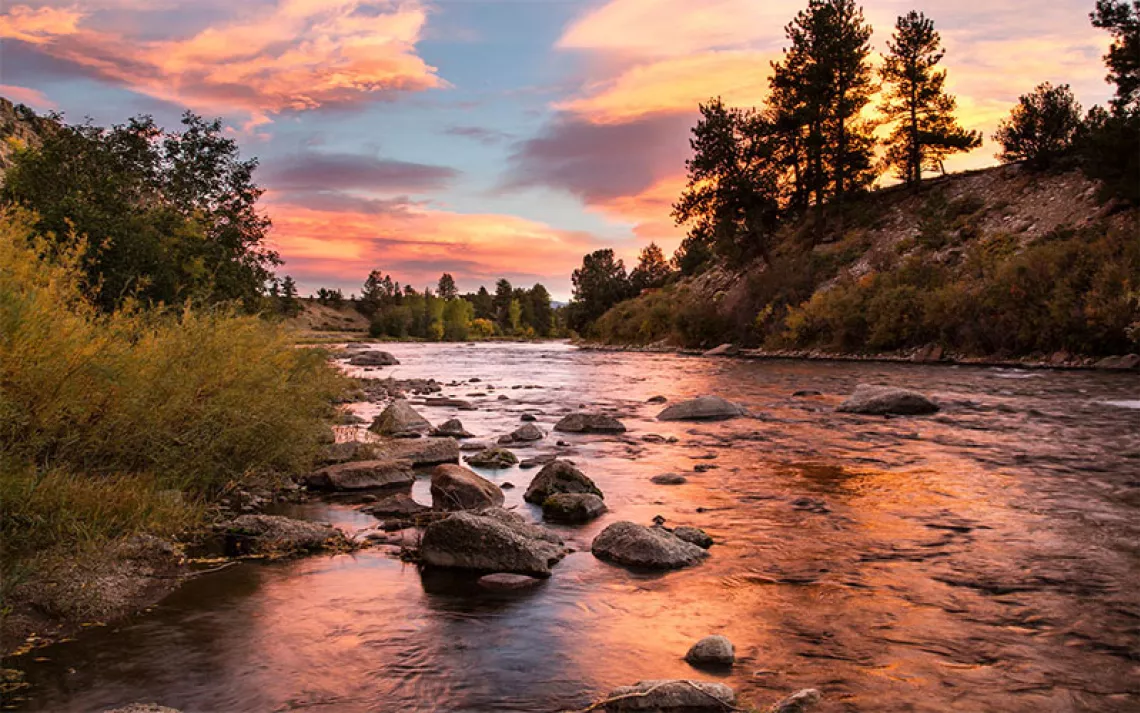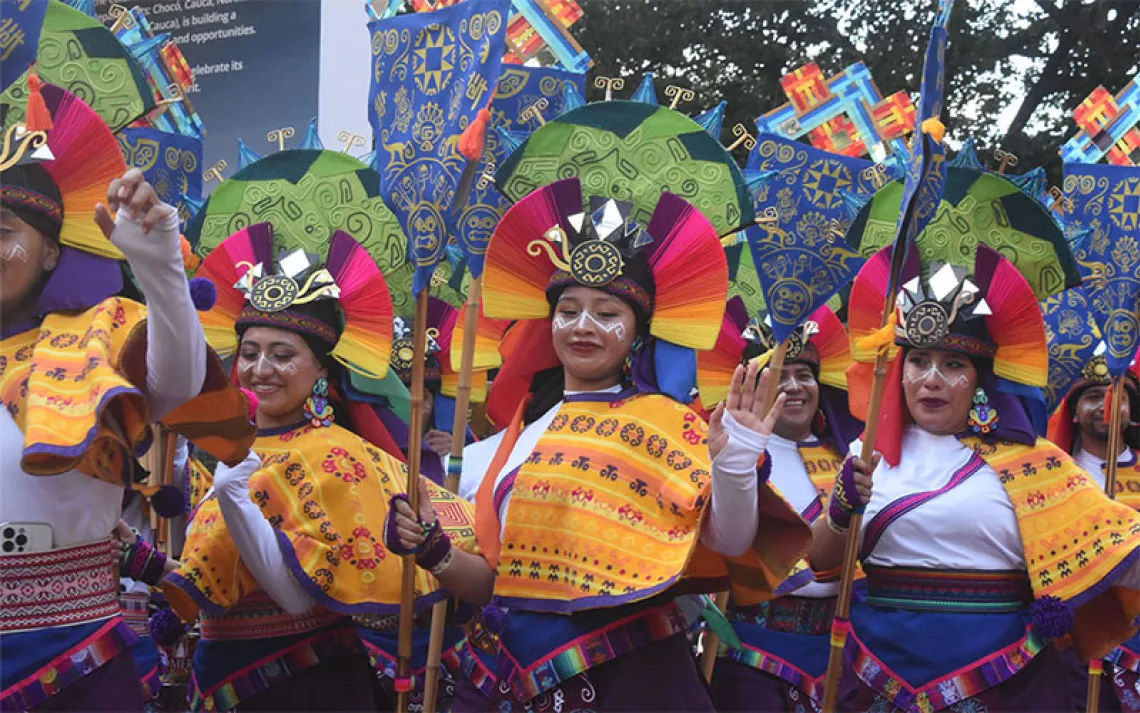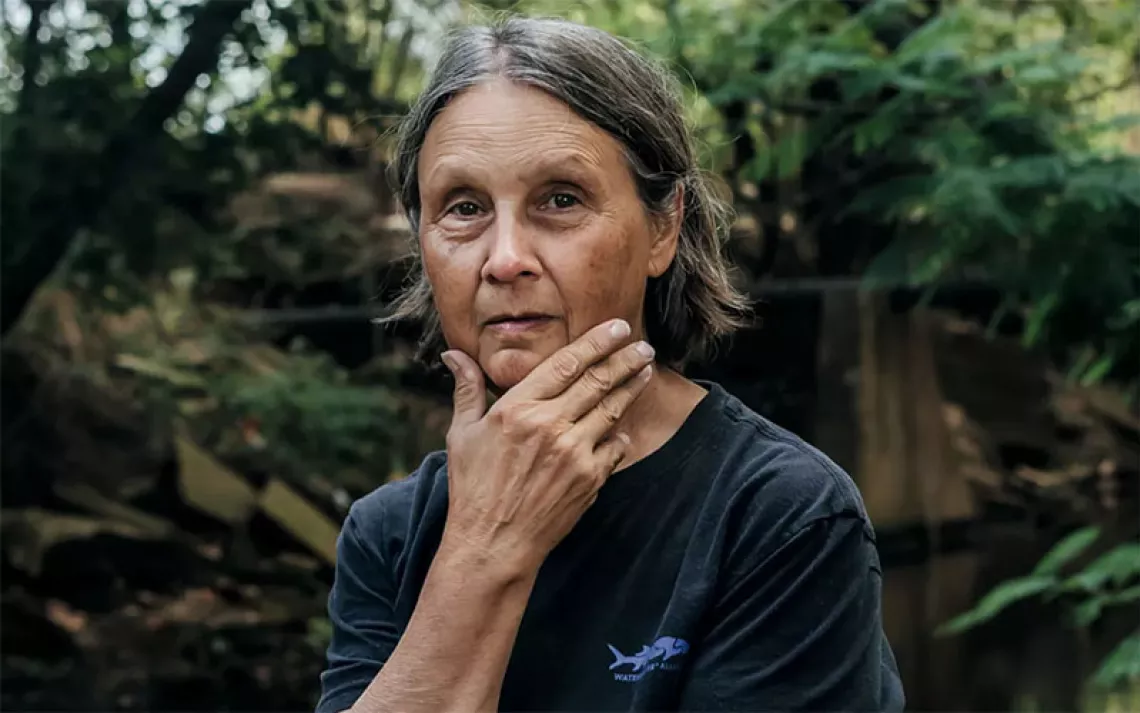The Klamath Tribes Are Trying to Save the C’waam and Koptu Suckerfish From Extinction
The fish have long been at the center of a sacred way of life
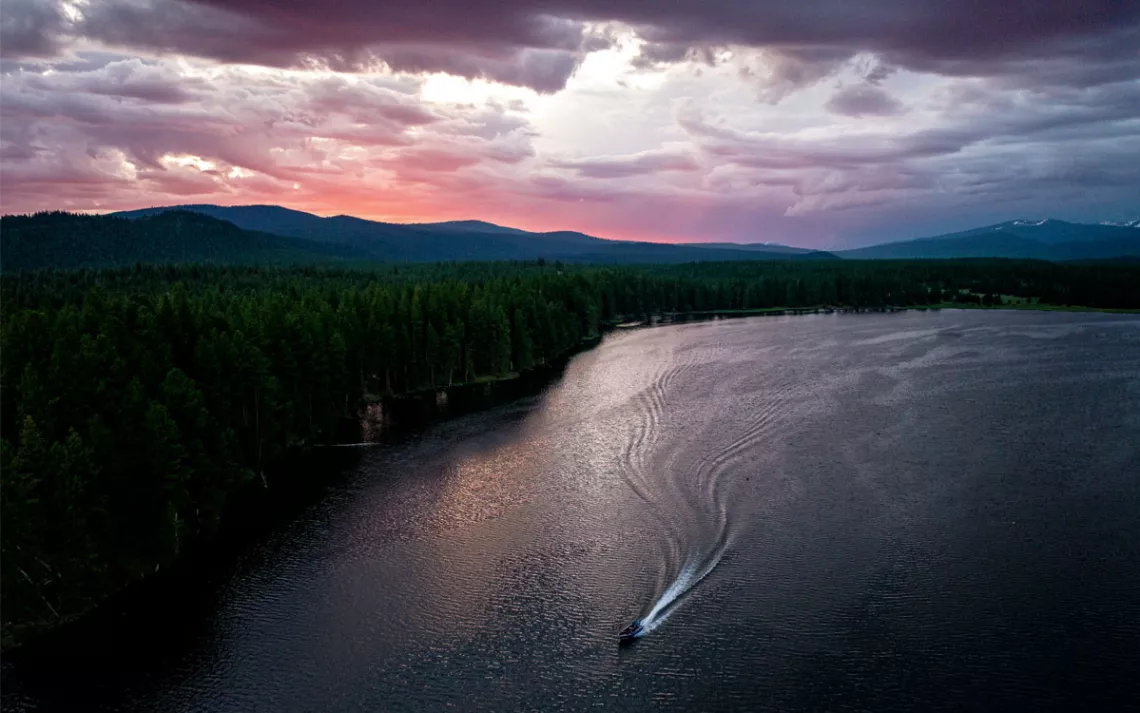
The waters of Oregon's Upper Klamath Basin provided a home for c'waam and koptu for millennia. In recent decades, pollution and low water levels from dams have pushed the fish toward extinction.
AMONG THE SPRAWLING wetlands and ponderosa-pine forests of the Upper Klamath Basin, fish once gave people life. In this part of Southern Oregon, winters can be long, harsh, and hungry. The Klamath Tribes tell a story that one particularly deadly winter, a spirit in the form of a giant serpent preyed upon villagers, picking people off one by one. When the villagers begged for relief from their creator, Gmok'amp'c, the god took the serpent to a mountaintop, chopped it into pieces, and threw the pieces into a lake—where they swam away as fish. The creator then announced that as long as the fish known as the c'waam and koptu remain, the Klamath people will continue to exist.
For generations, c'waam and koptu—also called Lost River suckers and shortnosed suckers—churned up the Sprague and Williamson Rivers at the end of every winter, when snow still lay on the ground and food stores grew scarce. Each year, the water writhed with fish. Weary of the winter, people native to this region, including those from the Klamath Tribe and the Modoc Nation, rushed to the rivers to fill basket after basket.
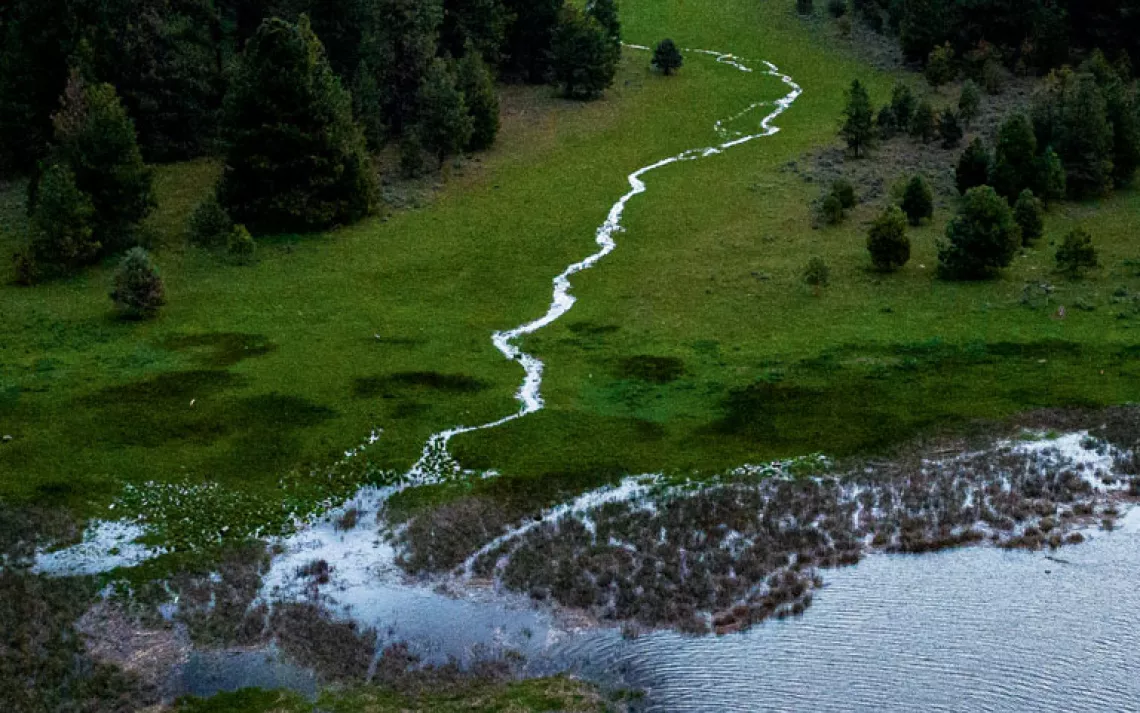
The waters of Oregon's Upper Klamath Basin provided a home for c'waam and koptu for millennia. In recent decades, pollution and low water levels from dams have pushed the fish toward extinction.
Klamath tribal member Garin Riddle Sr., also known as Big Badger, shared the origin story of the fish during a C'waam Ceremony this past April. Klamath elders and others from the community gathered around a crackling bonfire on the banks of the Sprague River to celebrate the c'waam and koptu's return to their spawning waters—a ceremony dating back thousands of years. Patchy snow still covered the ground. The river, brown and turbid with snowmelt, was decisively empty of the fish.
"We almost didn't have a C'waam Ceremony," Riddle said.
Traditionally, the ceremony involves blessing two c'waam—one released back into the river, the other placed on the fire. This year, it had taken days and multiple pairs of eyes to track down and catch a single fish, which swam in a large black bucket at the center of the crowd of onlookers. The c'waam was a funny-looking creature—two feet long with a rounded and slightly upturned nose, like a bulldog's. Its huge pink lips, which had evolved to scour lake and river bottoms for algae and phytoplankton, worked furiously. It was also beautiful, with navy blue scales and a tail fin that spread out like a folded-paper fan. "It was a struggle to catch this fish," Riddle said.
There's finally a reason to believe it's not too late for the c'waam and koptu.
The suckers are teetering toward extinction. Each year, fewer than 30,000 c'waam and 6,500 koptu migrate back to their spawning grounds, down from the tens of millions that once thrived in the Upper Klamath Basin. Decades of habitat degradation and pollution from agriculture have rendered Upper Klamath Lake, the home to which they return after they finish spawning, poisonous. While most adult fish can withstand the pollution, it's too toxic for their young to survive. In 1988, the fish were classified as endangered species. Not a single juvenile has lived past infancy since the 1990s, and the hardy adult survivors are steadily growing older. Each year, the c'waam and koptu make their run, spawn, and lay eggs. And each year, their populations shrink.
Decades of legal battles and a new captive-rearing program have kept the c'waam and koptu on this earth. A large-scale reintroduction effort aims to return these captive-raised fish to the home that's in their DNA. For the Klamath Tribes, it's a fight for culture, community, and the right to exist as they have for time immemorial.
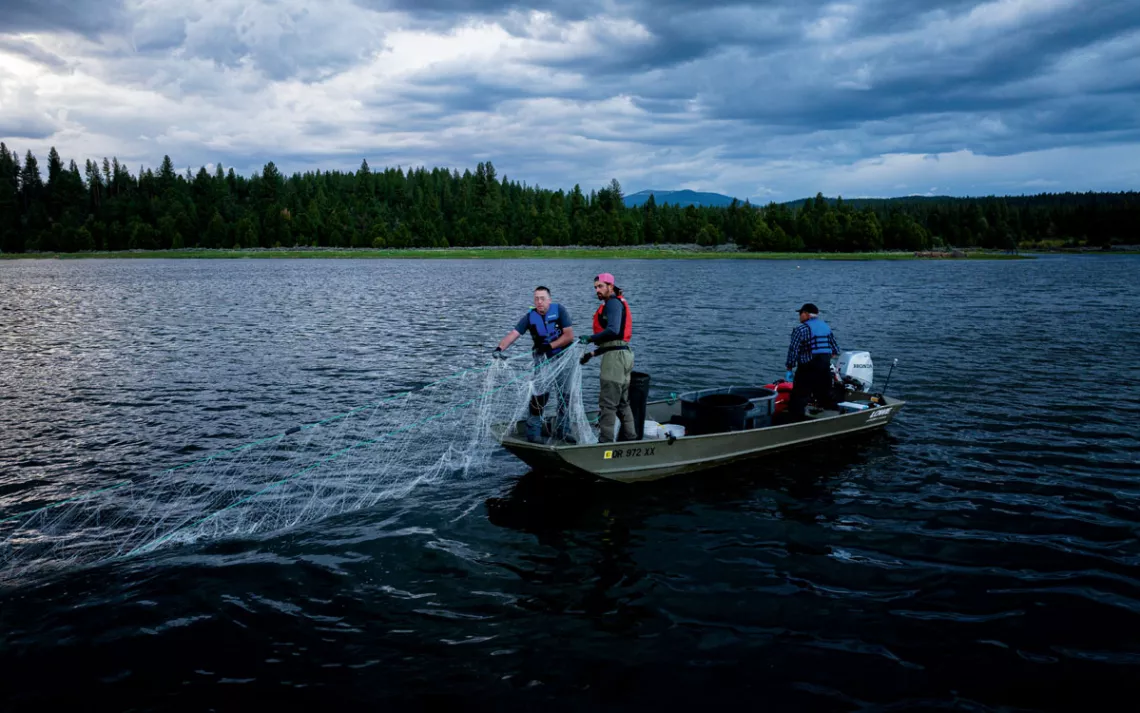
Alex Gonyaw, left, works with other scientists to rescue c'waam and koptu. It requires a nearly constant effort to sustain the fish numbers.
At the ceremony, the wild c'waam was passed around to the elders for them to touch and pray over it. Its eyes darted wildly as the elders put their hands on its gaping mouth, like a kiss. "The prophecy of this fish going away—if that happens, we will follow," Riddle said. "Now we are tasked to go ahead and honor that fish."
MORE THAN 150 years ago, a complex of wetlands filled the Upper Klamath Basin. Vast plains of water stretched all the way to the mountains on the horizon. Rivers snaked haphazardly, sprawling into bogs before reforming. Tule reed formed golden fields, interspersed with bright-yellow water lilies called wocus. This lush vegetation provided shelter to the c'waam and koptu for the first two to five years of their life cycle, when the young fish are too vulnerable to survive in the open waters of Upper Klamath Lake. They enjoyed long life spans, surviving well into their forties and fifties.
This was also the environment where the Klamath Tribes thrived before colonization. Native people, living in small settlements across the region, collected the tule and wocus, hunted for deer and elk in the ponderosa forests, and fished for c'waam and koptu. Then, in the mid-1800s, white settlers began trickling into the Upper Klamath Basin, lured by gold and land. Already, the landscape had been altered by fur trappers, who had decimated the engineers of the lush wetlands: beavers. The new settlers further transformed it, draining the swamps and lakes to farm the fertile peat soil.
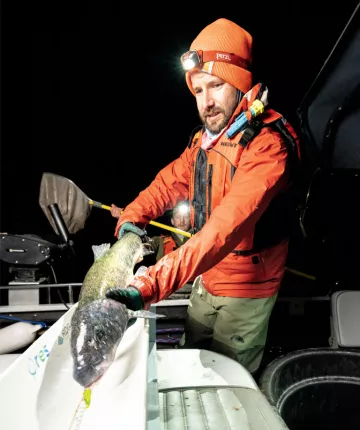
Fisheries biologist Stephen Staiger measures an adult c'waam.
With many of the wetlands gone or fenced off, it became nearly impossible for Native tribes to live as they once had. Many were starving. To survive, the Klamath Tribes were forced to make a compromise: In the Treaty of 1864, leaders ceded 23 million acres of land to the US government in exchange for the right to hunt, fish, and gather on their remaining 2 million acres "in perpetuity." Soldiers from the newly built Fort Klamath rounded up the tribes and placed them in a single, cramped reservation with very few resources. Leaders were publicly executed and traditional religious practices outlawed.
Over the following decades, the US government handed out parcels of the Klamath Tribes' land for pennies—to early settlers and then World War I veterans. Wetlands continued to disappear, replaced by fields of alfalfa and potatoes. Without beavers, the Sprague and Williamson Rivers turned into narrow channels. After the Bureau of Reclamation installed a network of dams and irrigation canals, known as the Klamath Project, nutrient pollution flowed unfiltered from the farmlands into Upper Klamath Lake.
As the suckers' habitat deteriorated, so did the tribes' traditional way of life—including their relationship with the c'waam and koptu. In 1932, the Klamath Tribes stopped gathering for the C'waam Ceremony—the beginning of a 60-year-long lapse in the ritual. No one alive today knows why. But Jeff Mitchell, a tribal council member who stood at the 2023 ceremony to describe the last time the celebration was practiced "in the old ways," has a theory: grief.
"The man who led the last ceremony, Sky, he walked this land when it was just us here," Mitchell said. "Before our neighbors arrived, before we signed a treaty with the US. Told we can't speak our language no more, told we can't fish and hunt. He had seen so much change."
The Klamath people stopped preparing c'waam and koptu as they once did—opting to batter and fry the fish instead of hanging it to dry. Children were sent to residential schools, where abuse was rampant and they were barred from speaking their own language. Then, in 1954, Congress enacted the Termination Act, which stripped the Klamath Tribes of their tribal status and the federal protections that came with it. As a result, they lost all their land. "[People] scattered. Alcoholism rates soared. Suicide rates soared," said Clay Dumont, chairman of the Klamath Tribes.
BY 1988, WHEN the c'waam and koptu were first listed as endangered, the richness of all that the Klamath Tribes had before colonization—their hunting, gathering, and fishing way of life—was in danger of being lost. The community was fractured. The loss of the C'waam Ceremony had been particularly devastating to tribal identity: "[The ceremonies] are important because they produce a unity of understanding," Dumont said. "You lose those shared understandings, shared respect for who we are and how we're attached to a place."
Still, memories of the c'waam rituals hadn't completely faded. Motivated by the federal government's endangered species listing, cultural scholar and tribal member Gordon Bettles proposed an idea to tribal elders: Bring the ceremony back.
Their response wasn't an immediate yes. No one remembered exactly how the ceremony was conducted or the minutiae of the rituals; after all, the last surviving tribal members had been children when they'd last attended one. They'd need to start over. For a few years, leaders deliberated. Their decision: They would do their best with what they knew.
The return of the C'waam Ceremony in 1990 was part of a larger cultural resurgence within the Klamath Tribes and across North American Indigenous communities. Around the same time the c'waam and koptu were listed as endangered, the Klamath Tribes regained their tribal status. The change didn't return their land, but it restored access to government benefits and programs, and, most important, it restored the Klamath Tribes' sovereignty, allowing them to reassemble their tribal councils and Indigenous leadership. "This was slow at first," said Boyd Cothran, a historian focusing on Indigenous peoples and settler colonialism in the American West.
In the Klamath region and across the country, new gas stations and casinos went up, boosting tribal economies. Leaders and activists worked to keep Indigenous languages alive and fought for Native rights to water and other resources. Bettles was one of those leaders. In the 1990s, he helped launch a Klamath-Modoc language program and develop the Klamath Words and Phrases Book, and he taught the very first language class.
Then, in 2005, a landmark court case affirmed the tribes' water rights. One particularly dry summer several years earlier, the Bureau of Reclamation had shut down the Klamath Project to preserve minimum lake levels and streamflows for suckers and salmon. Irrigators sued the federal agency, but the court ruled in favor of the tribes, deciding that the suckers' status as endangered and Klamath water rights took priority. The case affirmed that these rights dated back to "time immemorial." "That's earlier than anybody's," said Adell Amos, a legal scholar at the University of Oregon whose work focuses on water law. Since then, the Klamath Tribes have been engaged in multiple legal fights to enforce the decision.
The Klamath Tribes' movement to reclaim their cultural heritage continues. That first generation of kids after the tribes regained their sovereignty are adults now. Many are learning to speak the Klamath language. Some, like Dumont, studied Native issues and became active in cultural groups. "Cultural revitalization is hard work. But the people are hungry for it," Dumont said.
And despite the transformation of their habitat, the remaining suckers do return year after year to the places where they first spawned. One of those places is Sucker Springs, a source of magma-warmed water that pours into Upper Klamath Lake from its eastern shores. Year-round, the water temperature at Sucker Springs remains a balmy 60.8°F, the perfect environment for embryonic fish to develop. While most c'waam and koptu migrate upriver, around 4,000 spawn at Sucker Springs.
Cued by warming springtime temperatures, the fish gather at Modoc Point before swimming together to Sucker Springs. "We really have no idea how they know to go to that particular place," said Alex Gonyaw, head biologist for the Klamath Tribes. "Just wild stuff."
THE DAY AFTER the April C'waam Ceremony, bright sunlight poured down on the crystalline waters of Upper Klamath Lake. In the distance, snowcapped, deep-blue mountains and sentinel-like Mt. Shasta towered over the landscape. "It's so pretty out. But it's deceptive," Gonyaw said.
Most summers, the lake turns green with mats of toxic cyanobacteria, fueled by nutrient pollution. By fall, the cyanobacteria die, and their decomposing bodies suck oxygen from the lake's bottom. During the worst years, Gonyaw finds fish washed up dead on the shore, unable to breathe. "In September, it's a mess. It smells like a sewer out here," he said.
Gonyaw isn't a Klamath tribal member. He had never heard of the c'waam or koptu until he moved to Klamath Falls, just south of the Klamath reservation, 18 years ago. Since he began working for the Klamath Tribes, he has come to know the suckers intimately. He's enchanted by their deep roots in this place, which go back 3 million years, when the suckers swam west across rivers that once connected the Pacific to the Mississippi basin—before the Rocky Mountains thrust upward, separating the c'waam and koptu from their midwestern brethren. "When you catch a c'waam, it's like picking up a dinosaur," he said. "They evolved here and only exist here."
Since 2016, Gonyaw has spent nearly every day out on the lake in his skiff. Even in that short time, he's watched conditions deteriorate. When he started, five times as many suckers were spawning. Each year, that number dropped by roughly 15 percent. Then, in 2022, no c'waam or koptu were detected spawning in the Williamson River. The water in the lake was too low for them to access the river's mouth. "It was very disturbing," Gonyaw said.
The weariness of bearing witness to this decline shows on his face. Gonyaw's warm brown eyes have heavy bags beneath them, the corners of his mouth turn down, and his brow is nearly always furrowed. "It's been constantly watching things disappear," he said. "This relentless chipping away of everything."
The c'waam and koptu are knitted into the fabric of this ecosystem. They harvest energy from microscopic lake species and use that energy to feed an entire food web—from the bald and golden eagles that still crowd the trees around Sucker Springs to the trees and wetlands fertilized by decaying sucker bodies. "The more I work with living things, there seems to be a magical component," he said.
When Gonyaw first started working with the Klamath Tribes, they were hesitant to interfere with that magic. There was talk of launching a captive-rearing program to bolster the dwindling populations, but tribal leaders were apprehensive because of the legacy of salmon hatcheries. Historically, those facilities, which breed and raise juveniles before sending them on their way, were set up in part to uphold Native treaty rights to salmon. Although they're intended to give salmon populations a boost, they have contributed to their decline: Hatchery salmon breed with wild-born fish, weakening their resilience, and they increase competition for food and other resources. "[The salmon hatcheries] didn't really do what they said they were going to do—this idea that you can build a dam, put a hatchery below the dam, and compensate for all of nature upstream," Gonyaw said. "So we avoided that until the very end. You could argue either way whether that was a good decision or not."
Then, one brutal summer forced a decision. In 2017, for the fifth year in a row, the Bureau of Reclamation responded to worsening drought by releasing more lake water into the Klamath Project than the maximum mandated under the Endangered Species Act. The lake levels got too low to allow the c'waam and koptu to access key habitat—from spawning waters to foraging sites. The low water levels had also concentrated agricultural pollution into a slurry where algae grew amok. That particular year, the pollution became too much for the fish. By the end of the summer, the Klamath Tribes had collected over 700 dead adult c'waam and eight koptu from the shores of the lake.
"That may have been a tipping point," Gonyaw said. Sucker mortality rates have steadily increased ever since.
The massive fish kill forced the tribes to set aside their hesitations about a captive-rearing program. In 2018, for the first time, Gonyaw and his colleagues scooped up buckets of c'waam and koptu eggs at Sucker Springs. Then they embarked on an experiment.
THE KLAMATH TRIBES weren't the first group to raise suckers in captivity—the US Fish and Wildlife Service had begun a similar program several years prior—but the tribes began writing their own protocol as they went. When Gonyaw had scoured the literature earlier, he'd found plenty of information on raising salmon and trout, but nothing on how to raise suckers.
Newly hatched c'waam and koptu don't look much like fish. As the young fish grow, their food needs change constantly. "They evolved in a wetland environment with a banquet of food choices," Gonyaw said. He tried feeding them plankton and manufactured feed but finally settled on brine shrimp—not what suckers eat in the wild, but the ravenous babies seemed to like it just fine. The catch to that: The shrimp needed to be hatched daily in salt water in a temperature-regulated environment.
At the hatchery, in a tub the size of a kiddie pool swam a cloud of inch-long threads, each with two tiny eyeballs: baby suckers. Fishery technician and Klamath tribal member Charlie Wright bent over the tub. The fish darted away from her shadow in a swarm. "We understand it's a life, not a paycheck," Wright said. She wore her long, dark-brown hair in two braids tied together in a ponytail. A tattoo of a crucifix emerged behind her ear; her forearms, decorated with roses, were muscular from cage fighting. Since 2022, Wright has worked with Gonyaw to raise these fish.
For Wright, a typical day involves checking the ponds—their temperature and oxygen levels—and the eggs, which bounce around in oxygenated glass cylinders. Then she moves hatched babies into aquariums. Like human infants, the young fish can't go more than a few hours without eating before they become unhappy, so work is around the clock. Sometimes Wright drives up the winding mountain road to the hatchery in the middle of the night just to check on them. "There are nights you don't get any sleep," she said.
Wright grew up in the Upper Klamath Basin. "I've been hunting and fishing, practicing our treaty rights since I was a little girl out with my dad," she said. "I got to see firsthand how much things have changed." She was aware of the existence of the c'waam and koptu, and of their importance, but she had no idea how close they were to the brink of extinction until four years ago, when she began fighting for her treaty rights.
When Klamath leaders signed the Treaty of 1864, which surrendered nearly all the Klamath homelands to the US government, it was upon the condition that they'd retain the right to hunt and fish as they always had, on the little land they still had access to. Without the ability to fish for c'waam and koptu, Klamath leaders and local Indigenous rights activists argue, those treaty rights are unfulfilled. And this loss isn't a faultless tragedy, they maintain—at least in part, it can be attributed to the reckless allocation of lake water to agriculture.
Wright's activism began on the trips she took hunting and foraging with her three young sons. Out in the backcountry, near her family's land, she'd see people illegally flooding fields and pumping water from streams, letting cattle stand hocks-deep in the rivers. She started using her smartphone to snap photos and post them online. As her online activism gained traction, she began taking it to the streets, leading rallies for the c'waam and koptu.
Whenever Wright speaks about the c'waam and koptu, her voice cracks and tears fall from her eyes. After rallies, audience members often approach her, crying themselves. "They tell me, 'Wow, we had no idea,'" Wright said.
At the hatchery, it was just her and the fish—all 56,000 of them. Wright lifted a lid on another tub that contained older juveniles, three years old, each six inches in length. The fish had evolved to live in the deep, muddy reaches of the lake; they fled from the daylight as it hit them. These juveniles are in the process of being tagged, which will allow the Klamath Tribes to track their movements after releasing them into the wild. The goal: to release 10,000 fish before 2026.
Over time, Wright has become attached to the suckers, especially the youngest, sometimes talking to them as though they are her own kids. "They're our babies," she said. "I tell them I'm happy to see them go, but I hope they come back."
In recent years, the Klamath Tribes' mood has shifted from total grief to cautious hope. There's finally a reason to believe it's not too late for the c'waam and koptu.
Interior Secretary Deb Haaland has been receptive to the Klamath Tribes' efforts to protect their treaty resources, providing valuable consultation and even visiting restoration projects on the lake. The effects of climate change on the basin, from drought to wildfires, have become apparent enough that farmers recognize that "this isn't business as usual," Dumont said. A large-scale restoration project of wetlands north of Upper Klamath Lake promises to help filter nutrient pollution from agriculture and eventually provide habitat to juvenile suckers. And while for years the lake was maintained at levels lower than those mandated under the Endangered Species Act (due to lax government oversight and agriculture), thanks to court cases by the Klamath Tribes, the government changed how it manages the lake, which finally contains enough water to allow the c'waam and koptu access to their habitat. Just downriver from the lake, the largest dam removal in history is taking place—after the project is complete, it will no longer be necessary to release large "flushing flows" from the lake to wash toxic parasites from the dams.
"Big social movements take time to develop. They take generations," Cothran, the historian, noted.
ON A SPRING day in 2022, not long after the c'waam and koptu made their annual run, 50 kindergarteners gathered on the banks of the Sprague River alongside Gonyaw. Near the small crowd was a collection of red buckets. Each contained a squirming c'waam. One by one, the students selected a bucket, carried it to the rushing water, and turned it upside down. The fish leaped into the water, returning to a home they'd never known.
The fish were part of the first cohort of captive-raised c'waam released into Upper Klamath Lake—500 total. Many of the students, about half of whom were members of the Klamath Tribes, were learning about the c'waam and koptu for the first time. "The bulk of young people don't know these things exist," Gonyaw said. "To be able to reconnect with their fish is powerful. It was wonderful to see the smiles on their faces."
Today, those fish are dispersed throughout Upper Klamath Lake. Occasionally, Gonyaw will catch sight of one, but it's hard to know how they're doing on the vast lake bottom. In spring 2024, the first of these fish should make their return migration. Some will gather at Modoc Point. Others will surge up the Sprague and Williamson Rivers. Then, the Klamath Tribes will learn if that first effort was successful. "I'm excited to know if they can come home," Wright said.
The goal is for these reintroduced fish to lay eggs that hatch and survive, breathing life into the c'waam population. But it could be years before the lake levels are consistently high enough, and the water clear enough, for that to happen. Until that time, the Klamath Tribes will do everything in their power to keep the fish on life support. "When the snow melts in the spring, they will return," Cothran said. "The Klamath people will be there too."
In the origin story of the c'waam and koptu, the creator god told the Klamath Tribes that their existence depends on the survival of these fish. In reality, it's the reverse. As long as the Klamath people survive, the c'waam and koptu will too. And the Klamath people aren't going anywhere.
 The Magazine of The Sierra Club
The Magazine of The Sierra Club
